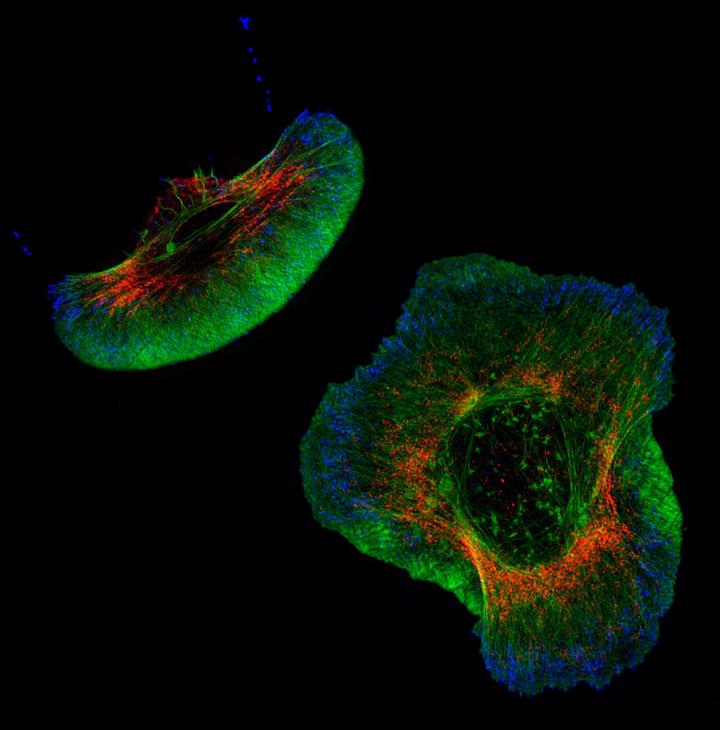Myosin light chain kinase regulates cell polarization independently of membrane tension or Rho kinase
 Featured on the cover of JCB
Featured on the cover of JCBAbstract
Cells polarize to a single front and rear to achieve rapid actin-based motility, but the mechanisms preventing the formation of multiple fronts are unclear. We developed embryonic zebrafish keratocytes as a model system for investigating establishment of a single axis. We observed that, although keratocytes from 2 days post-fertilization (dpf) embryos resembled canonical fan-shaped keratocytes, keratocytes from 4 dpf embryos often formed multiple protrusions despite unchanged membrane tension. Using genomic, genetic, and pharmacological approaches, we determined that the multiple-protrusion phenotype was primarily due to increased myosin light chain kinase (MLCK) expression. MLCK activity influences cell polarity by increasing myosin accumulation in lamellipodia, which locally decreases protrusion lifetime, limiting lamellipodial size and allowing for multiple protrusions to coexist within the context of membrane tension limiting protrusion globally. In contrast, Rho kinase (ROCK) regulates myosin accumulation at the cell rear and does not determine protrusion size. These results suggest a novel MLCK-specific mechanism for controlling cell polarity via regulation of myosin activity in protrusions.